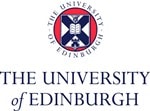Year 1: Absolute beginners take Danish 1A, Norwegian 1A or Swedish 1A, which provide concentrated learning of spoken and written language; students are also introduced to the present-day culture and institutions of their chosen country, and study some literature; for the more advanced, Danish 1B, Norwegian 1B or Swedish 1B builds on earlier competence and contain a more extensive literature component; plus modules from the other chosen subject. Year 2: Danish 2, Norwegian 2 or Swedish 2 which provide more advanced work in language; students also follow a literature course; additionally students have a choice of half-courses in Scandinavian languages; European cinema; or the literature and culture of Medieval Europe; plus modules from the other chosen subject. Year 3: Spent abroad in a Scandinavian country. Year 4: Students continue with advanced language work, as well as selecting a number of special subject options for intensive study; students also write a dissertation; plus modules from the other chosen subject.
| Форма обучен. |
Начало |
Продолж. |
| Форма обучен.Дневное |
Началоn/a |
Продолж.Кол-во лет: 4 |
| Форма обучен.Дневное |
Началоn/a |
Продолж.Кол-во лет: 4 |
The Scandinavian languages have a rich literature ranging from the Middle Ages to the modern period; for the linguist they offer a fascinating field for comparative study between themselves and with other Germanic languages; by analysing the structure of the English language, written and spoken, through the techniques of modern linguistics, students gain an insight into issues like how language relates to the culture of its speakers, and how differences in speech reflect past history while feeding into further change; students are also able to explore present-day varieties of English and Scots; students gain an understanding of how English works and why it is the way it is; they consider which features of English might be manifestations of a universal grammar, shared with all other languages, and what characteristics make English distinct and distinctive.



